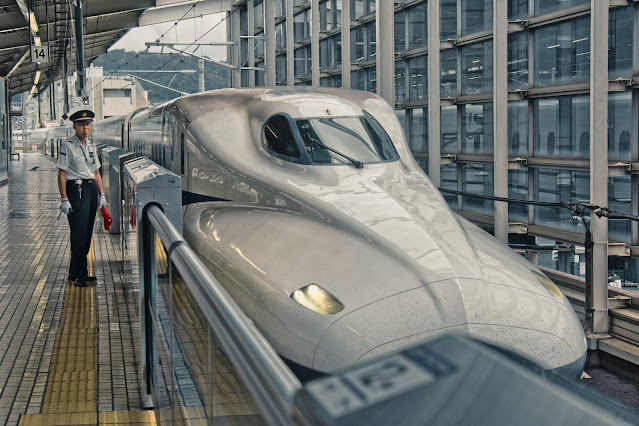The primary aim of this initiative is to help
revitalize local communities by making food products from specific regions more
accessible to consumers in larger cities. By transporting these goods from
production areas to urban centers, railway operators like West Japan Railway
Co. (JR West) hope that city dwellers will feel a stronger connection to the origin
of the products they consume.
This concept can be attributed to the COVID-19
pandemic when Japan's railway companies sought innovative solutions to counter
the decline in seat sales. It was during this challenging period that they
uncovered a devoted customer base within specific food producers, prompting the
expansion of their freight services.
What sets this new approach apart is the shift from
the traditional method of carrying commercial cargo in deck areas between
carriages, limited to just 40 boxes on regular bullet trains. In contrast, the
innovative use of passenger cabins allows for significantly larger cargo
capacity and more flexible shipping options.
This transition to Bullet train-based freight services
also comes in response to an impending truck driver shortage in Japan's freight
sector. The government plans to implement new regulations in 2024 to reduce
working hours for truck drivers, bringing them in line with other industries.
Consequently, the new railway-based delivery service is expected to help
mitigate this problem.
Other railway companies, such as JR West and Kyushu Railway
Co. (JR Kyushu), have followed suit, offering high-speed parcel services for
companies looking to deliver seafood, vegetables, and flowers with unmatched
freshness and timely delivery. These services have been dubbed
"comfortable trips" since they ensure regulated temperatures and
vibration-free carriage for delicate items, such as live fish and ripe fruits.
For instance, JR West successfully transported live
Yobuko squid from Karatsu, Saga Prefecture, to a department store in Kyoto,
covering over 435 miles. The journey took six and a half hours, during which
the squid were kept in seawater to maintain their freshness. Once delivered,
they were served as fresh sashimi to delighted consumers.
Due to the Bullet train's smooth tracks and trains,
perishable goods can now be transported with minimal knocks and vibrations.
This advancement enables the delivery of such goods to consumers precisely at
their peak ripeness, offering an unmatched experience for those who crave the
freshest and highest-quality products.
The innovative use of Bullet train's for freight
transportation represents a significant step in revitalizing local communities
and ensuring the timely delivery of delicate and perishable goods throughout
Japan. As these railway companies continue to refine and expand their
high-speed parcel services, consumers can look forward to enjoying fresh,
regional delicacies from afar, fostering a stronger sense of connection between
rural producers and urban consumers.
In an age when consumers crave a closer connection to the origins of their food, these high-speed deliveries serve not only as a lifeline for local communities but also as a conduit for a gastronomic adventure, bringing the essence of far-flung regions right to the hearts of urban dwellers. Beyond their speed and efficiency, these bullet trains have become culinary ambassadors, uniting the diverse flavors of Japan and fostering a profound appreciation for the freshest, highest-quality products. As they ride the rails of innovation and expand their freight services, the Bullet trains weave a tantalizing narrative of symbiosis between rural producers and urban consumers, crafting a future where delicious delicacies and heartfelt stories traverse the country on tracks of possibility.
Related Articles:
Japan's Bullet Trains on the Path to Full Automation
Innovative Self-Driving Expressway Lane: A Game-Changer In The Truck Driver Shortage






Comments
Post a Comment